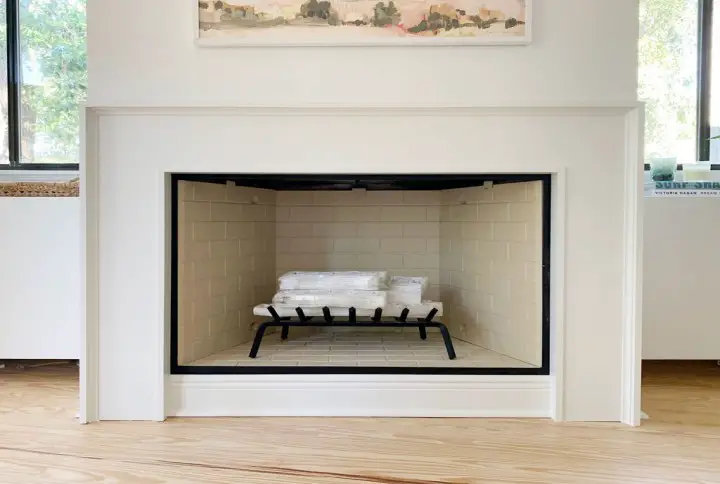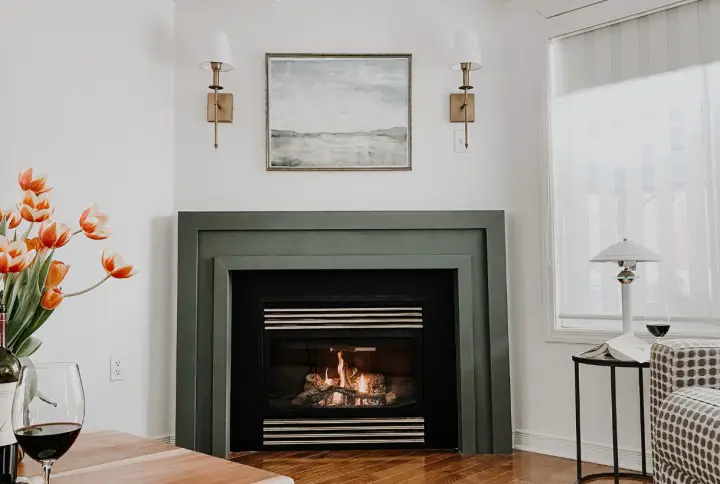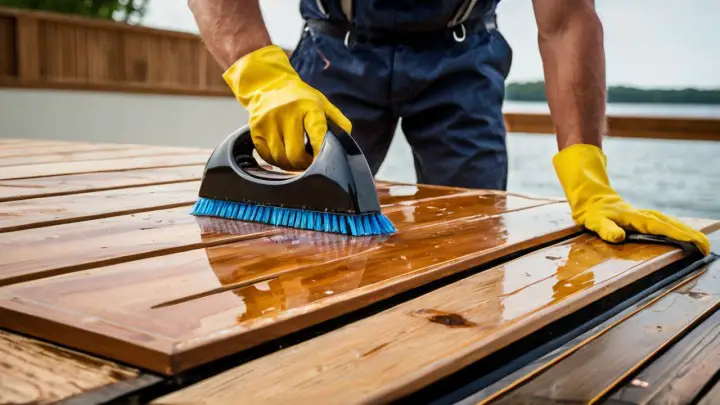DIY Fireplace Surround | Elevating Your Home’s Aesthetic
Overview
A fireplace surround serves as the focal point in many homes, and creating your own DIY fireplace surround offers a unique opportunity to blend both style and functionality. Whether you’re seeking to modernize your living space or add a touch of rustic charm, a custom-made fireplace surround is an impactful addition to any home. In this guide, we’ll take you through detailed steps on how to design and build a DIY fireplace surround that not only enhances your interior decor but also becomes a standout feature of your living space.
Step-by-Step Guide to Building a Fireplace Surround
1. Planning Your Fireplace Surround Design
Before you embark on the construction process, it’s crucial to thoroughly plan your fireplace surround design. Consider the existing decor of the room, the material preferences, and the overall style you want to achieve.
- Measurements: Accurate measurements are vital. Measure the height, width, and depth of the fireplace to ensure the surround fits seamlessly.
- Style: The style of the surround should complement the overall theme of your home. Common styles include modern, traditional, rustic, and farmhouse designs.
- Materials: Materials such as wood, stone, marble, or brick can dramatically influence the final look. Each material offers different textures and durability factors to consider.
- Budget: Establish a clear budget that factors in the cost of materials, tools, and any additional features you wish to include in the project.
2. Choosing the Right Materials
Your choice of materials will significantly impact the durability and aesthetic of the fireplace surround. Here are some of the most popular options:
- Wood: For a classic, timeless look, wood is an excellent choice. It’s easy to work with and allows for versatile design possibilities. Consider hardwoods like oak or cherry for a more polished finish.
- Stone: If you prefer a more rugged and natural appearance, stone fireplace surrounds provide an unmatched level of texture and character. Slate, limestone, and granite are popular options for stone surrounds.
- Tile: For a modern touch, you can use tiles. Whether you opt for porcelain, ceramic, or even glass tiles, they provide a sleek, polished look with a variety of color choices.
- Brick: For an industrial or rustic style, brick fireplace surrounds are both functional and aesthetic. Their natural color variations add warmth and charm.
3. Building the Fireplace Surround Frame
Once you’ve finalized your design and selected the materials, it’s time to start building the framework. The frame serves as the foundation that will support the entire fireplace surround.
- Materials Needed:
- Wooden boards or MDF for the frame structure
- Nails or screws
- Carpenter’s level
- Measuring tape
- Framing Process:
- Begin by cutting the wooden boards or MDF to the required dimensions.
- Use screws or nails to assemble the frame, ensuring that it is securely fastened and level.
- Depending on the size and weight of the materials you’re using for the surround, consider reinforcing the frame with additional support beams.

4. Adding the Cladding and Mantel
After the frame is securely in place, the next step involves adding the cladding and mantel. The cladding refers to the outer layer that covers the frame, while the mantel provides a decorative shelf above the fireplace.
- Cladding Materials: Depending on the look you’re going for, the cladding can be made of wood panels, tile, or stone. Secure the cladding materials to the frame using construction adhesive and screws.
- Mantel Installation: If you’re including a mantel, install it at the desired height above the fireplace opening. Ensure that the mantel is well-supported, as it may need to hold heavy objects or decor.
For a modern fireplace surround, a simple floating mantel with clean lines is a popular choice, while a rustic fireplace surround may include a thicker, wooden mantel with distressed finishes.
5. Finishing Touches: Trim, Molding, and Paint
No DIY fireplace surround is complete without the right finishing touches. Adding trim, molding, and paint will bring your project to life and tie together the overall design.
- Trim and Molding: Use trim to cover any gaps between the fireplace surround and the wall for a seamless appearance. Crown molding can also be added for a more polished, traditional look.
- Paint and Stain: Depending on the material, you may choose to paint or stain the surround. When painting wood or MDF, opt for heat-resistant paint that can withstand high temperatures. If you’ve used a stone or tile surround, a clear sealer will enhance the natural texture and protect the surface from wear.
6. Safety Considerations
When constructing a fireplace surround, safety must be a priority. The materials used near the fireplace should be non-combustible or heat-resistant to ensure they can withstand the high temperatures produced by the fire.
- Clearances: Adhere to local building codes regarding clearances between the fireplace and combustible materials. Ensure that there is ample space between the firebox opening and the surrounding materials.
- Fireproofing: Materials like stone, tile, or special heat-resistant drywall should be used around the immediate vicinity of the fireplace. If you’re unsure, consult with a contractor or your local building department to confirm the safety requirements for your specific fireplace setup.
Mastering the Timeless Elegance of the Herringbone Pattern
bleeding heart flower | pro tips for Planting, Grow and Care
DIY Fireplace Surround Ideas to Inspire You
To get the creative juices flowing, here are a few design ideas for your DIY fireplace surround:
- Shiplap Fireplace Surround: Ideal for a farmhouse or coastal look, shiplap provides a rustic yet clean-lined aesthetic. You can paint the shiplap in a neutral tone or leave it natural for a more authentic feel.
- Reclaimed Wood Mantel: For a rustic fireplace surround, consider using reclaimed wood for the mantel. Its weathered texture and natural imperfections create a warm, inviting focal point.
- Stone Veneer Fireplace Surround: If you love the look of stone but want an easier installation, stone veneer panels offer the perfect compromise. They mimic the appearance of real stone without the weight and complexity of installation.
- Minimalist Modern Design: For a contemporary approach, opt for clean lines, monochromatic tones, and minimal decor. A simple fireplace surround with smooth marble or tile cladding creates a sleek, modern look.
Conclusion
Building a DIY fireplace surround allows homeowners to craft a bespoke, aesthetically pleasing centerpiece in their living space. From the initial design phase to the finishing touches, every detail plays a significant role in shaping the final outcome. By choosing high-quality materials and adhering to safety guidelines, you can create a stunning fireplace surround that will not only enhance the visual appeal of your home but also offer long-lasting durability. Whether your style leans toward traditional, modern, or rustic, this guide provides you with the tools and inspiration to bring your vision to life.







